How often and correctly to water the bell pepper?

Correct agrotechnology of cultivation of sweet bell peppers will allow you to get an excellent harvest. This is a plant that loves warm growing conditions. Gardeners and gardeners of central Russia grow this crop well in a temperate climate in the open field. The main secrets are sufficient watering and proper care.
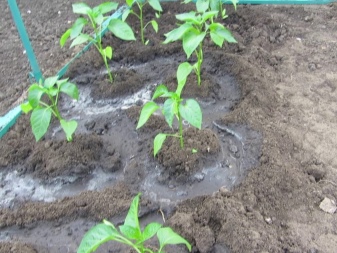
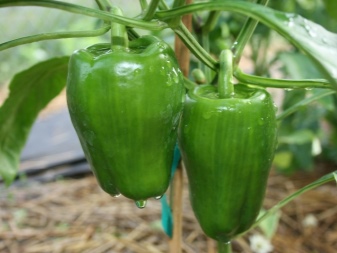
How often should you water?
To cultivate sweet bell peppers, it is necessary to water in accordance with the norms.
- Direct the water from the watering can directly into the root collar so that it is delivered to the plant root system in a targeted manner. It is necessary to make a deepening around the bell pepper in the form of a groove so that the water immediately flows to the roots.
- Watering should be done in small portions, excluding soil erosion and exposure of plant roots.
- The main condition for watering a sweet bell pepper seedling is the ability to saturate the ground with moisture to a thickness of 0.6-0.7 meters.
- It is forbidden to allow strong moisture or dryness of the soil.
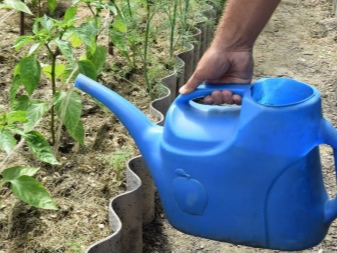
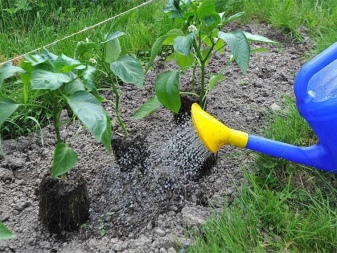
The frequency of watering during the growing season of sweet bell peppers depends on the climatic conditions of the summer season. If the summer is hot and dry, then abundant and frequent watering is required.
The root system of this plant is located in the upper layer of the soil, shallow. That's why pepper does not tolerate drought, as a result of which flowers and ovaries fall, the yield decreases. And in the heat, water quickly evaporates from the soil surface. In addition, the seedlings of this plant themselves actively absorb moisture.
Before planting seedlings in the garden, it should be watered quite a lot. Then the sweet bell pepper seedlings will look vigorous, develop faster and wither less.
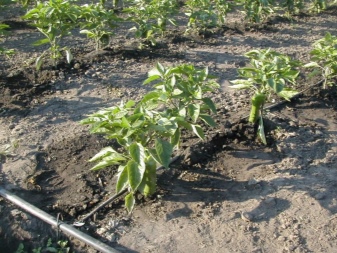
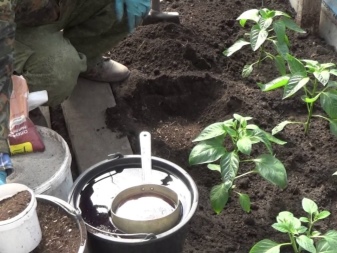
It is advisable to plant seedlings of this culture in cloudy weather. It is necessary to fill the holes for planting sweet bell peppers with water. Wait until the water is completely absorbed, and plant pepper seedlings. After that, watering can be omitted for 5 days.
After planting the culture and until the appearance of peduncles, spraying should be carried out once a week. If the weather is dry, then irrigate the plants 3 times a week. Use a hose with a shower. If the seedlings of bell pepper still lack moisture, the amount of water is increased. The average rate is 13 liters of water per 1 m2.

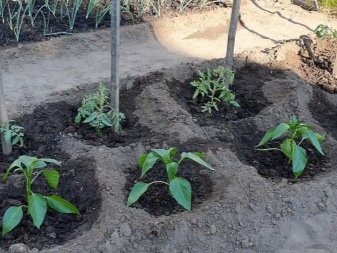
The growth of bell pepper and yield directly depend on proper watering at any stage of development:
- when flowers appear, watering is carried out in the root area of the pepper, so as not to remove pollen and allow fruits to form;
- when the ovary is formed, then watering is reduced to 2 times a week;
- during the formation of the first fruits and until the end of the season, moistening is performed once a week.
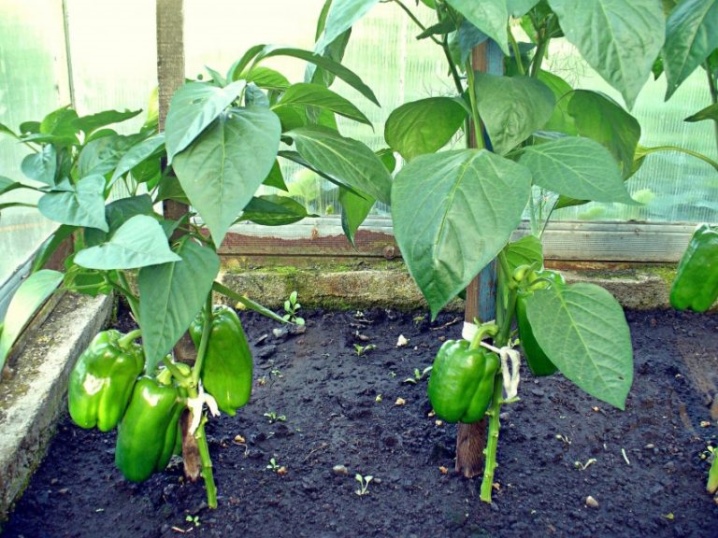
Watering the bell pepper bushes should be done on one side, and loosening on the opposite side.
Next time, water is brought in from the other side, and loosening is also done from the opposite side. This alternation of actions will allow the roots of plants of this culture to develop correctly.
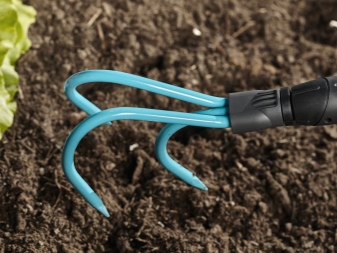
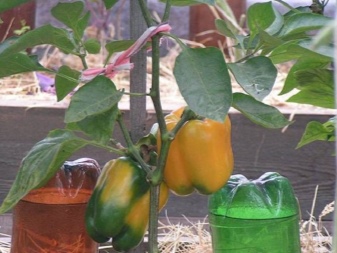
Thorough moisturizing of sweet bell peppers is done with the introduction of dressings (in the form of organic or mineral fertilizers). Useful microelements, dissolving in water, will be absorbed faster by bell pepper seedlings and will have a beneficial effect on their growth and productivity.
When blooming and setting the fruits of bell peppers, root watering should be carried out. They are carried out 2 times a week. The rate used is 11 liters of water per 1 m2. During the rainy season, watering is reduced.
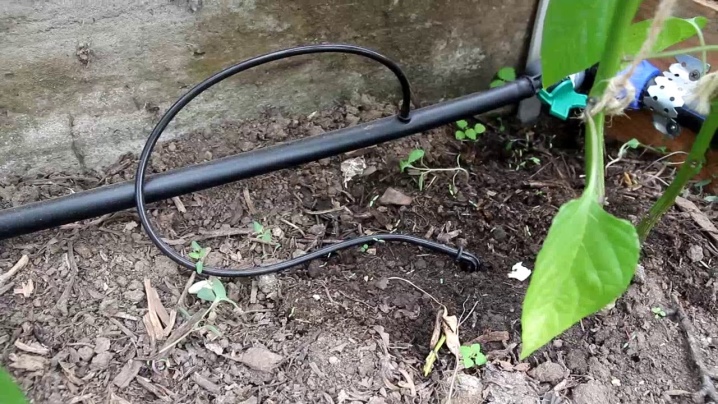
The right time to water
It is more advisable to water the plantings of sweet bell peppers in the garden at the beginning of the day (before lunch). When the pepper seedlings are just planted, they are irrigated at time intervals of 2-3 days.
During hot and dry periods, you can increase the amount of water to moisturize the root system in the early morning, before the sun has risen. It is necessary that the moisture is absorbed before noon.
It is impossible to water the bushes of sweet bell pepper in the scorching sun - you can harm the plants. If water drops fall on the leaves and stems of pepper seedlings, they, like lenses, can cause plant burns.
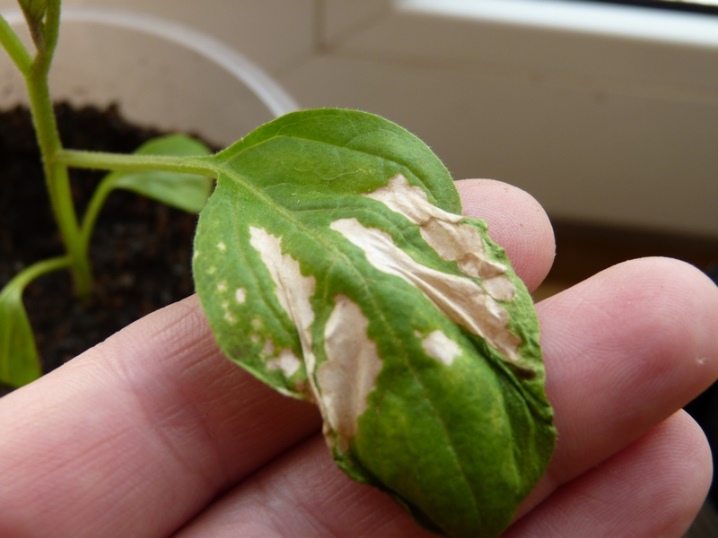
The rapid drying of moisture in the sun contributes to the formation of a film in the form of a crust on the ground, which subsequently cracks, and the roots of the plants dry out, as a result of which the sweet bell pepper seedling dies.
The best time to irrigate crops is early morning or after sunset. The preset moisture regime is favorable for obtaining a full and rich harvest of sweet bell peppers.
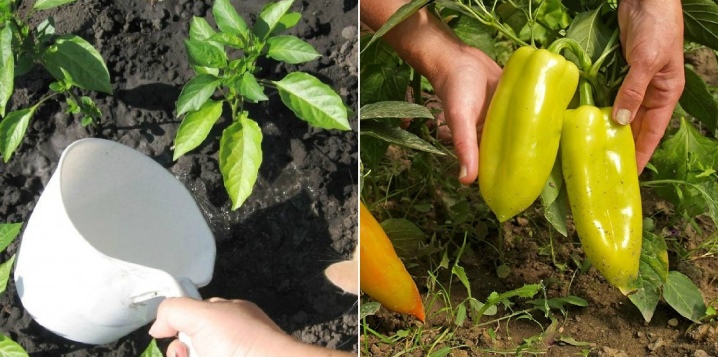
Water temperature
For irrigation, it is necessary to use settled water with a temperature of 23-25 degrees.
If you use too cold water to water the bell peppers, they will stop growing and stop bearing fruit.
It is a big mistake to water the pepper seedlings with artesian, icy water. Agronomists suggest: fill containers with water and expose them to the sun to warm them up.
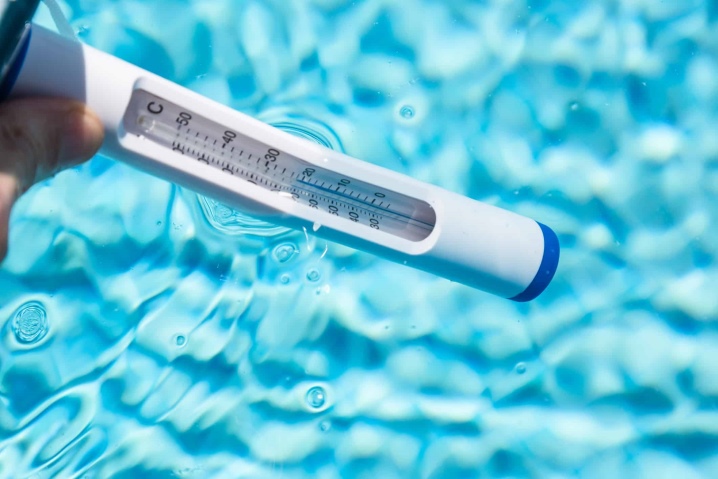
The ways
The most important thing is to choose the correct method of watering the bell peppers.
Humidification can be carried out manually or mechanized using pumps and motors.
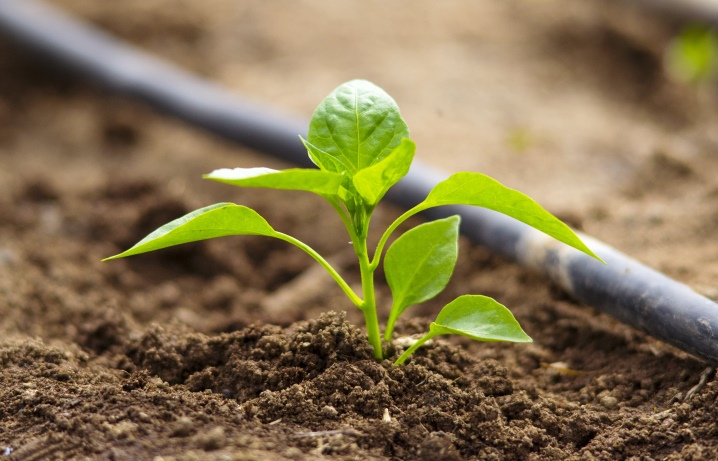
There are several known methods for moisturizing the soil and leaves of sweet bell pepper seedlings.
- Surface method. It is used in areas with hot and dry climates. After planting the plants in rows, a groove is made along them. Water is poured into it, and then earth is poured onto it.
- Drip irrigation (irrigation). It is used only outdoors. The drip irrigation system consists of hoses connected to a filter and drip chamber. They are brought to the plants, and water slowly (drop by drop) flows to the roots. With this watering, the top layer is not moistened, but is mulching.
- Subsoil watering. Pipes are laid underground (in open ground). Any water can be used: both well and ground water. Passing through the ground, it is purified by microorganisms living in the soil.
- Sprinkling. They use special irrigation devices connected to hoses. The advantage of this method is the simultaneous watering of several groups of plants. The disadvantage is uneven soil moisture. Not suitable for hot climates.
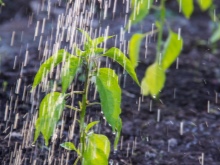

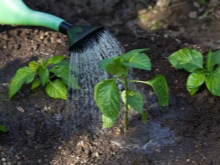
Any gardener or gardener selects a suitable method of watering and caring for this crop, taking into account the weather conditions and the quality of the soil.
Applying these tips and tricks, summer residents and gardeners are able to grow a rich harvest of sweet bell peppers.













The comment was sent successfully.